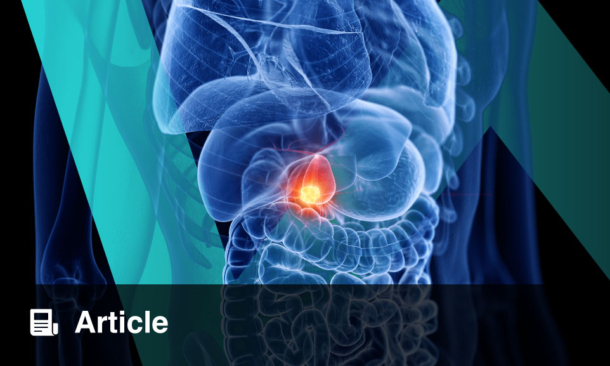Heterogeneity within inflammatory bowel disease cohorts is often cited as the biggest challenge to reliably studying the clinical efficacy of therapeutics.1 While phenotypic heterogeneity is often the focus of these discussions, there is growing evidence that molecular heterogeneity in disease-driving pathways may be an important aspect of disease heterogeneity.2,3 Unfortunately, efforts exploring molecular heterogeneity to date generally rely on databases of well-studied pathways which skews analysis results towards known biology.
To explore molecular heterogeneity and avoid skewing, we used co-expression modules to stratify ulcerative colitis patients into molecular subgroups.4,5 Co-expression modules are groups of genes that tightly correlate across a cohort. Possible explanations for these correlations include expression of the correlated genes within a particular cell type or the downstream control of a specific transcription factor. The reason for the correlation is not known or needed; instead, we hypothesise that their tight correlation is evidence that these genes could represent the transcriptional footprint of a signalling pathway. We then used these co-expression modules to cluster 217 moderate-to-severely active ulcerative colitis subjects and 21 healthy normal controls.6 Molecular profiles from patients and co-expression modules were generated from colonic biopsies submitted to microarray analysis.
To assess the biological relevance of our clustering, we next clustered the 113 co-expression modules into four groups and used the Ingenuity Knowledge Base to assess the presence of known pathways. We found that the four groups of co-expression modules were enriched distinct pathway sets; inflammation/monocytes, mucosa/pro-regulatory, T cells/metabolism, and mitochondria/metabolism. Interestingly, the mucosa/pro-regulatory modules anti-correlated (r=-0.49) with the inflammation/monocyte modules consistent with the identity of the enriched pathways. We hypothesise that these four groups represent the predominant axes of molecular variation within our ulcerative colitis cohort. Importantly, we note that the inflammation axis was strongly enriched for known, well-studied pathways consistent with the strong research focus in this area but that the other axes did not exhibit such strong enrichment. While there are plausible technical reasons for this that we are working to explore, one hypothesis is that molecular heterogeneity in inflammatory bowel disease is only partially explained by variation in the pathways that the field deeply studies.
To assess the utility of these molecular axes of variation for patient stratification, we clustered subjects into four subgroups based on the four molecular axes. We then computed the response rates to anti-tumour necrosis factor (TNF) therapy for each patient subgroup. Surprisingly, the subgroup characterised by the highest score on the inflammation axis, which was also the subgroup with the highest TNF pathway, contained the greatest number of TNF non-responders. Conversely, the subgroup exhibiting the highest response rate to anti-TNF was characterised by the lowest molecular inflammation score. This is notable because it suggests that the burden of the signalling pathway targeted by a particular drug may not indicate likely clinical response, perhaps because these subjects are characterised by a burden of TNF signalling that is too high to control with anti-TNF therapy. In addition, our analysis revealed a surprising amount of molecular heterogeneity across a phenotypically homogenous cohort. This observation alone argues that molecular stratification may be an underappreciated yet critical step towards understanding variability in clinical response to therapeutics which is necessary to reduce the size of clinical trials.








